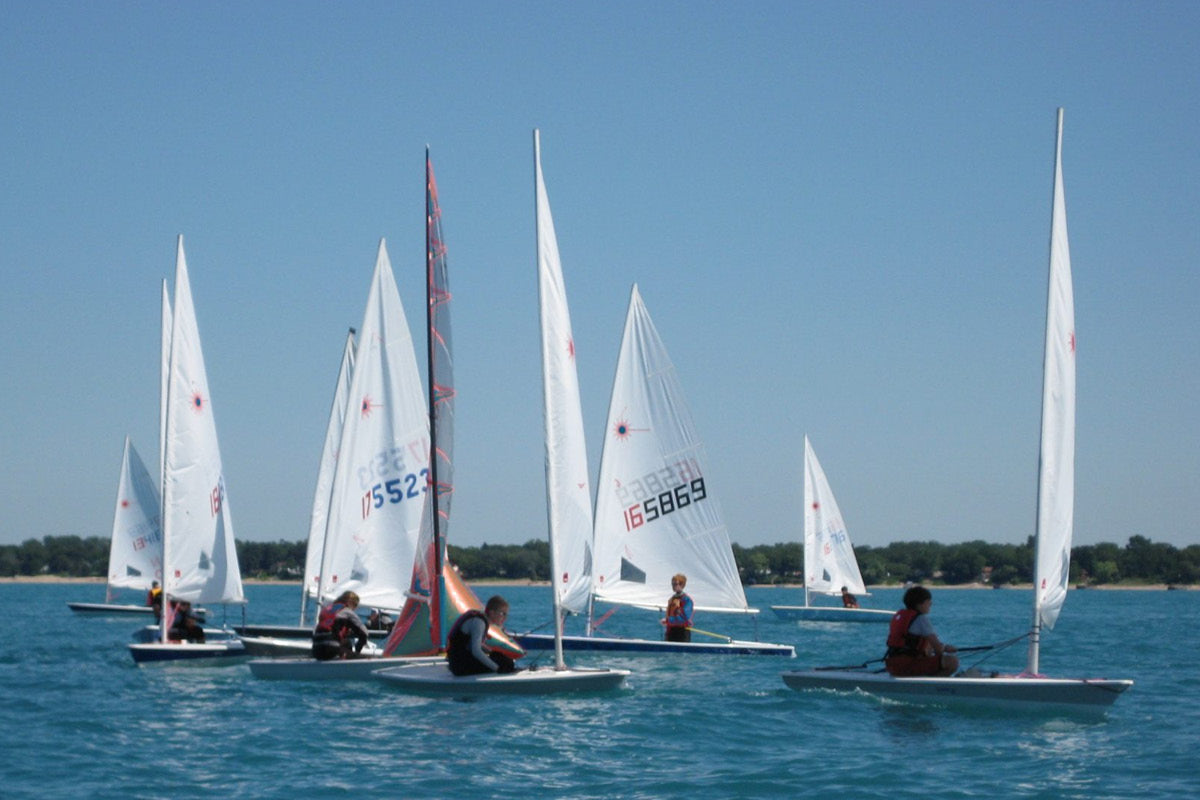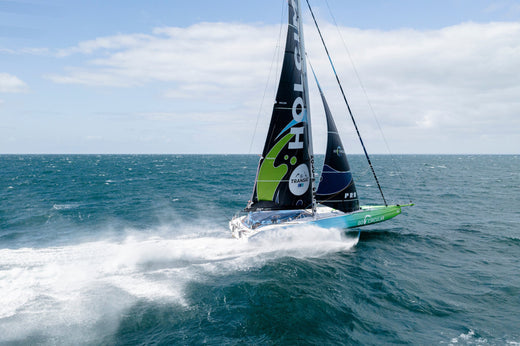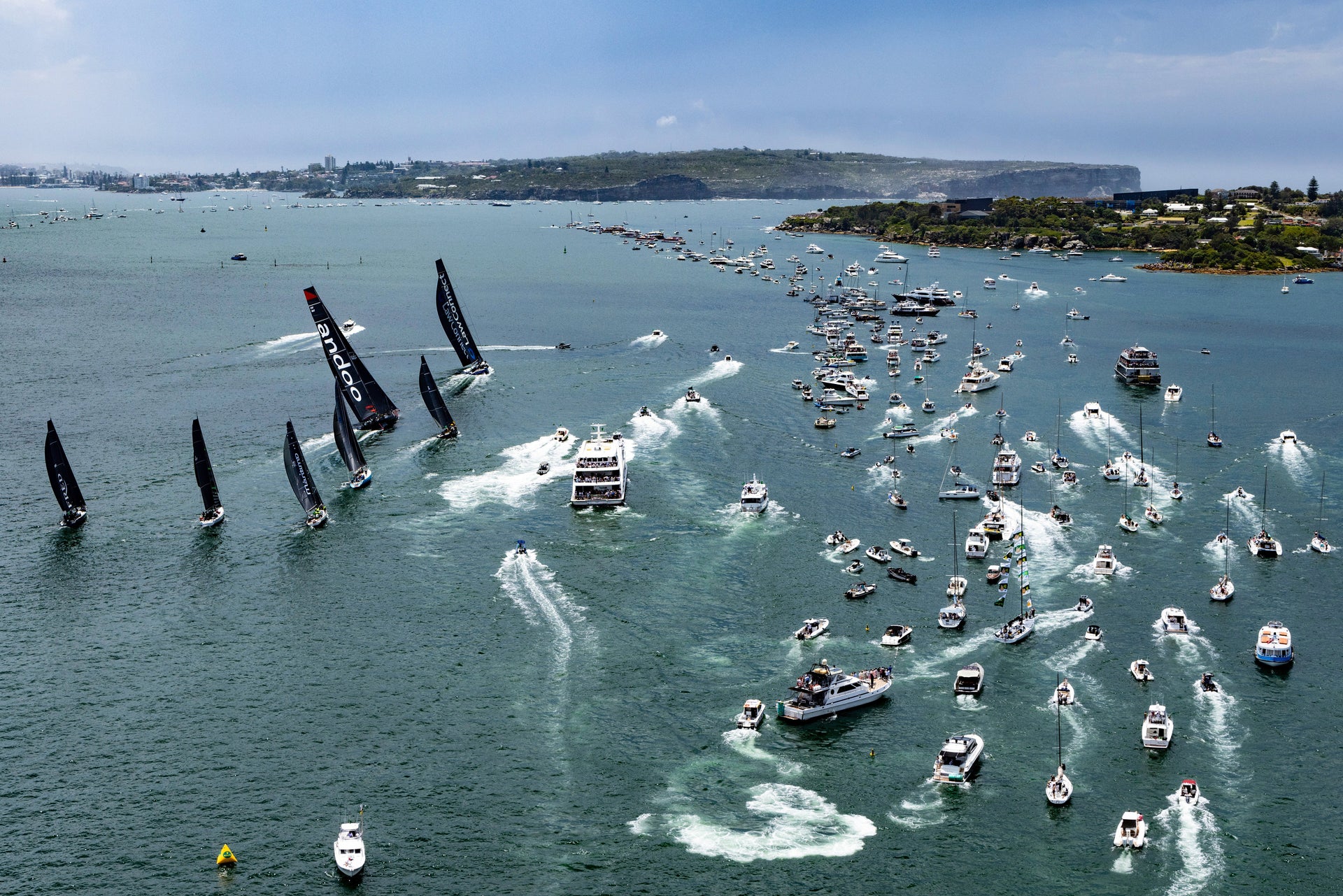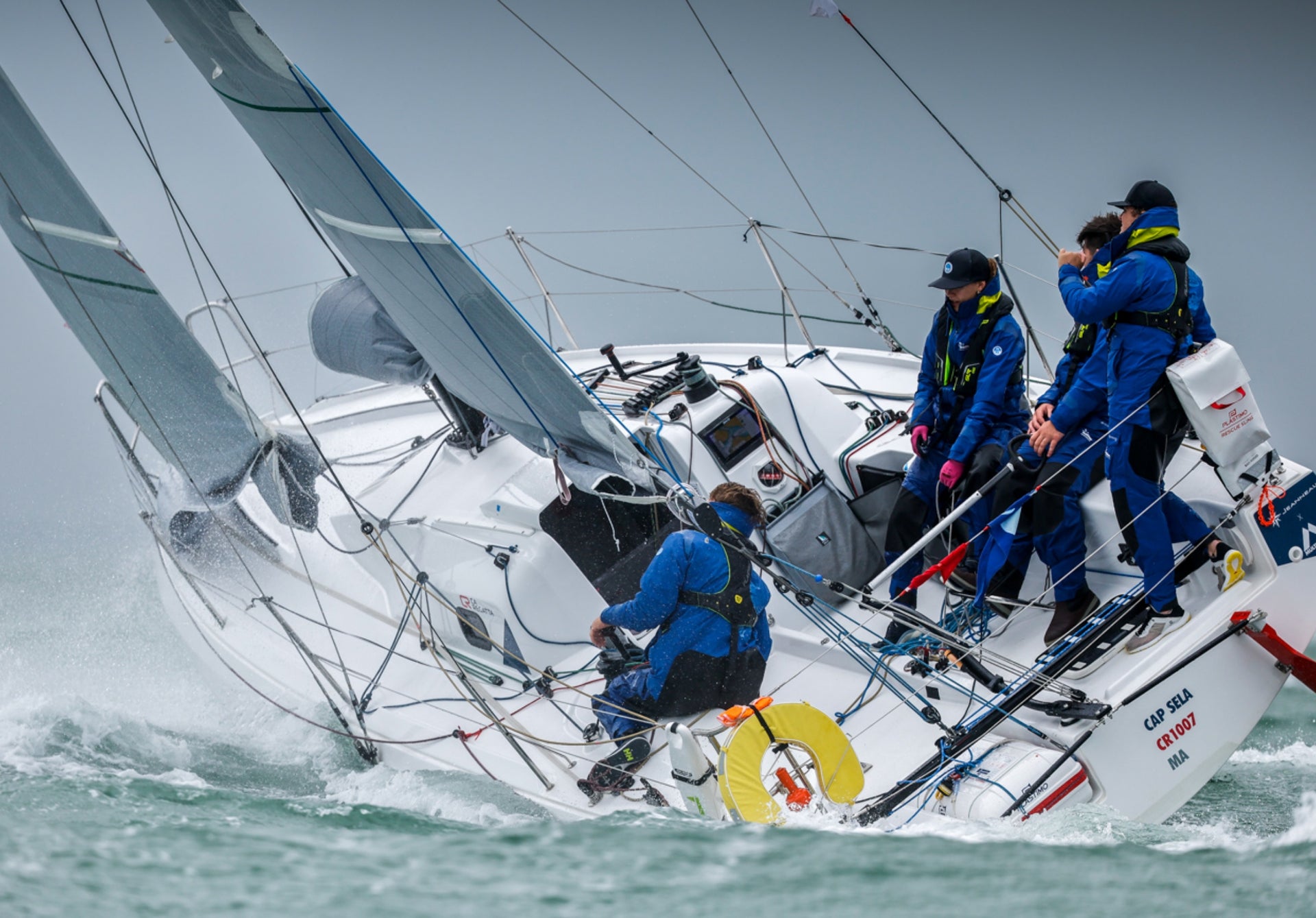IT ALL STARTS IN JUNIOR SAILING
One Sailors Journey to Keep Sailing in his Life

Nigel, third from right back row, has been involved in sailing since he was a tiny tot.
Nigel Crosscombe began sailing at a young age through lessons at
Etobicoke Yacht Club (EYC) thanks to his Aunt who lived nearby. From the get-go, Nigel became entrenched in the sport and loved being on the water. Fast forward 20+ years and he's still on the water and helping the next generation. When he is not in the classroom teaching, Nigel is a LF with
Ontario Sailing, runs his own company focused on sailing education and still actively sails. He shares his sailing story and advice for clubs trying to get more youth involved.
Tell us how you got into Junior Sailing.
Growing up I had an aunt who was very involved in my life and she lived near a yacht club. She always very generous to my sister, myself. She saw a sign, advertising a local sailing program and she thought it'd be a really cool birthday present to gift me a week of sailing camp. I went to sailing camp and then I was hooked and you know, two weeks became a month, which became a whole summer and I wanted to get into racing. I tried racing and I had a really good time, but I wasn't quite old enough to take it seriously. From there, I progressed through the levels very quickly and then became an instructor and for me that, you know, I became a part of a community.
What were your next steps once you became a sailing instructor?
I tried the laser sealing circuit and I was really too young but I was still really keen to go sailing. At Etobicoke Yacht Club, they had a really cool program called the Next Generation Regatta where a bunch of skippers donated their boats and took kids from the sailing school out. The goal was really to get youth from the club and the community out keelboat racing. They'd let you skipper, I mean, they were on board to make sure you didn't crash. After that I found a boat that I clicked with and I, and I got involved in the keelboat sailing seam, sailing C&C 27 out of EYC. Through that opportunity, you know, that's when I really got to learn a lot about racing by being able to take a bit of a backseat role. Now, keelboat racing is what do for the majority of my sailing again.
What is your best advice for yacht clubs or programs to get youth to stay involved? What do we need to do as a community to help keep people involved?
We got a lot of things we get to do, but one of them is definitely to make sure that our sailing clubs are accessible, open and friendly for all. I remember when I was a young kid at a sailing school getting told by a member that we couldn't play over here and we had to go to play over there, and that was a gravel parking lot where they said we could go play. At the same time, you know, I have worked at a lot of clubs that have been very friendly and I've been around clubs that are very friendly for youth and kids. I think when you start looking at the age that you start losing people is around 18. If they don't become an instructor or they leave instructing to pursue a job related to their field of studies they might not come back to sailing. So you have some people who are involved in weeknight racing, but I think a lot of yacht club programs rely on owning a boat and for a lot of people in their twenties, which is when you people can't afford to do it. There's clubs that are doing boat sharing programs, such as National Yacht Club's 420 club where you don't have to own the boat but you still are able to participate in a racing environment, you still have opportunities to continue participating in the sport.
What keeps you coming back?
I love really growing the sport and supporting sailing in all the different forms, through the work I've done with Ontario sailing I've had an opportunity to travel with, see what sailing looks like. I grew up sailing in the Toronto area and it was mostly yacht club based programs. Now I've gone to sailing programs that are in the Muskokas that own one style of dinghies, a shed and they have fantastic programs. But I've learned that sailing looks different all over the place and, and to be able to support those clubs with their growth and development wherever they are, whether it's race or recreational programs, whatever their next step is. If there's a way that I can help them and, you know, give back to the community that gave me the best summers of my life. That's sort of what I'm passionate about in my work as a teacher.

How did you create Crosscombe Sailing?
I had a good friend who went to an overnight camp and they needed a sailing instructor to evaluate bronze five at the time. They didn't have a local instructor and he said any chance you could come to my camp this weekend? And, you know, a deal was made. I went up and I got to work with this camp sailing program, make a little bit of money on the side on the weekend. And you know, for me, I kind of really enjoyed that experience. As I started returning more to my work as a learning facilitator, I realized that there were a bunch of clubs and there was a demand for it
. Especially with overnight programs and clubs, a little bit outside of the GTA and just to build capacity; there was a desire for training. Crosscombe Sailing really evolved out of the need for education, especially outside the GTA. A lot of Crosscombe Sailing has come from just saying yes. As long as I feel like it's an appropriate fit and there's a way that I can help them, just say yes to that opportunity. It's something that I've learned a lot through when I was traveling around the world that just say yes and you'd be amazed at where it takes you.
What advice would you give to skippers and clubs to get new members to be involved? How would you get more youth involved long-term?
I think that working with your local junior sail and asking them, in an overall club sense, to create a strategy on how junior sail and your club racing program can work together. As I mentioned, the next generation regatta where you're, you know, giving kids an opportunity to go out on keelboats, giving them an opportunity to drive, make decisions, it allows them to feel that they're involved and that they're not just turning a winch or sitting on the rail or getting told to go down below another racing started. Give them an opportunity to be involved and teach them, train them and they're going to return that investment that you make in them.
Good crew aren't found, they're made.
We need to grow the sport and work on making it accessible. We've got to work on that transition into sort of like what we, in sailing, call long term athlete development (LTD), which is essentially on the one side of the ladder, it's a pathway from being first contact with the sport to the Olympics. But on the other side it's sailing for life. The idea behind sailing for life is that eventually you might not decide that competition's not for you, but that's okay, because there's this whole other aspect of the sport that becomes a lifestyle, a community.

 Nigel, third from right back row, has been involved in sailing since he was a tiny tot.
Nigel, third from right back row, has been involved in sailing since he was a tiny tot.


























